Olfactory neuroblastoma mimics molecular heterogeneity and lineage trajectories of small-cell lung cancer
- PMID: 38788720
- PMCID: PMC11186085
- DOI: 10.1016/j.ccell.2024.05.003
Olfactory neuroblastoma mimics molecular heterogeneity and lineage trajectories of small-cell lung cancer
Abstract
The olfactory epithelium undergoes neuronal regeneration from basal stem cells and is susceptible to olfactory neuroblastoma (ONB), a rare tumor of unclear origins. Employing alterations in Rb1/Trp53/Myc (RPM), we establish a genetically engineered mouse model of high-grade metastatic ONB exhibiting a NEUROD1+ immature neuronal phenotype. We demonstrate that globose basal cells (GBCs) are a permissive cell of origin for ONB and that ONBs exhibit cell fate heterogeneity that mimics normal GBC developmental trajectories. ASCL1 loss in RPM ONB leads to emergence of non-neuronal histopathologies, including a POU2F3+ microvillar-like state. Similar to small-cell lung cancer (SCLC), mouse and human ONBs exhibit mutually exclusive NEUROD1 and POU2F3-like states, an immune-cold tumor microenvironment, intratumoral cell fate heterogeneity comprising neuronal and non-neuronal lineages, and cell fate plasticity-evidenced by barcode-based lineage tracing and single-cell transcriptomics. Collectively, our findings highlight conserved similarities between ONB and neuroendocrine tumors with significant implications for ONB classification and treatment.
Keywords: ASCL1; NEUROD1; POU2F3; RPM; SCLC; esthesioneuroblastoma; neuroendocrine; olfactory neuroblastoma; plasticity; tuft.
Copyright © 2024 The Author(s). Published by Elsevier Inc. All rights reserved.
Conflict of interest statement
Declaration of interests TGO has a patent related to SCLC subtypes and a sponsored research agreement with Auron Therapeutics, serves on the scientific advisory board (SAB) for Lung Cancer Research Foundation, and as a consulting editor for Cancer Research and Genes & Development. BJG has interest in Rhino Therapeutics and is on the SAB for Smell and Taste Association of North America. J.C. has equity in Mirati Therapeutics and provision of services for Sonata Therapeutics. D.J. has consulted for Regeneron and ST Stent.
Figures
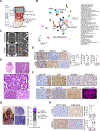
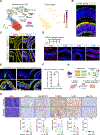
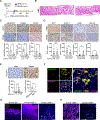
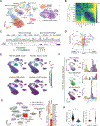
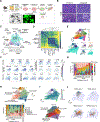
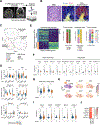
References
MeSH terms
Substances
Grants and funding
LinkOut - more resources
Full Text Sources
Medical
Molecular Biology Databases
Research Materials
Miscellaneous

